
# 47042A - 1991 AGMH Mark Clark Proofcard Only
Often called the ultimate philatelic issue, the Fleetwood Proofcard is a distinctive commemorative with an elegantly embossed surface. Each Proofcard bears an original work of art complementing the theme of the stamp and created exclusively for Fleetwood by a leading American artist. Proofcards are often collected on their own, but would also make a beautiful addition to your existing stamp or cover collection.
Â
Battle Of Monte Cassino
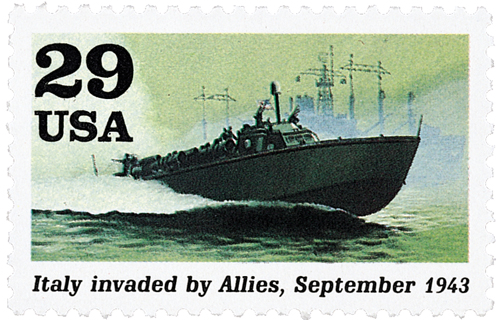
On January 17, 1944, the Allies launched one of the longest and bloodiest fights of the Italian campaign – the Battle of Monte Cassino.
Although Italy had surrendered on September 3, 1943, Germany was determined to fight for control of the Italian mainland. In a series of head-on assaults, the Allies slowly battled their way up the Italian peninsula to Monte Cassino, 75 miles south of Rome.
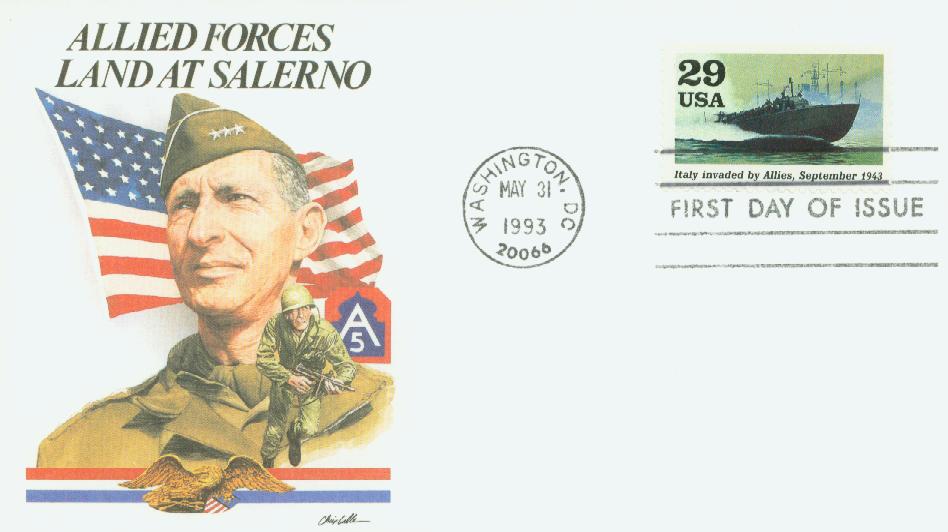
Their efforts were slowed by bad weather, difficult terrain, and the tough German defense, particularly by General Kesselring’s German forces at the Gustav Line. Fighting in the first stage of the Battle of Monte Cassino began on January 17, 1944, with British troops attacking the Germans across a 20-mile-wide front along the coast.
The Allies launched another attack two days later, and as a result, the Germans called in additional support from Rome to reinforce their defenses. Fighting continued for several weeks with the Allies gaining ground, but they were unable to keep it.
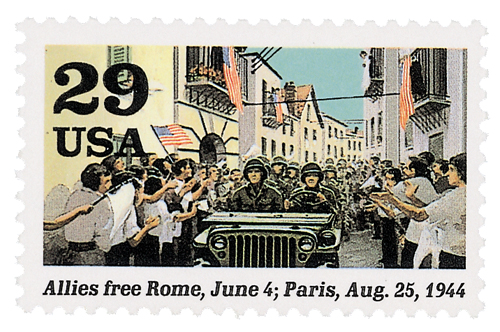
While that fighting was going on, the Allies launched Operation Shingle, landing 36,000 men at Anzio on January 22, 1944. Surprising the Germans from behind, the Allied forces were met with little opposition. However, rather than pushing forward, they attempted to further reinforce their position, allowing Kesselring time to develop a powerful counteroffensive which kept the Allies pinned down at Anzio for four long months.
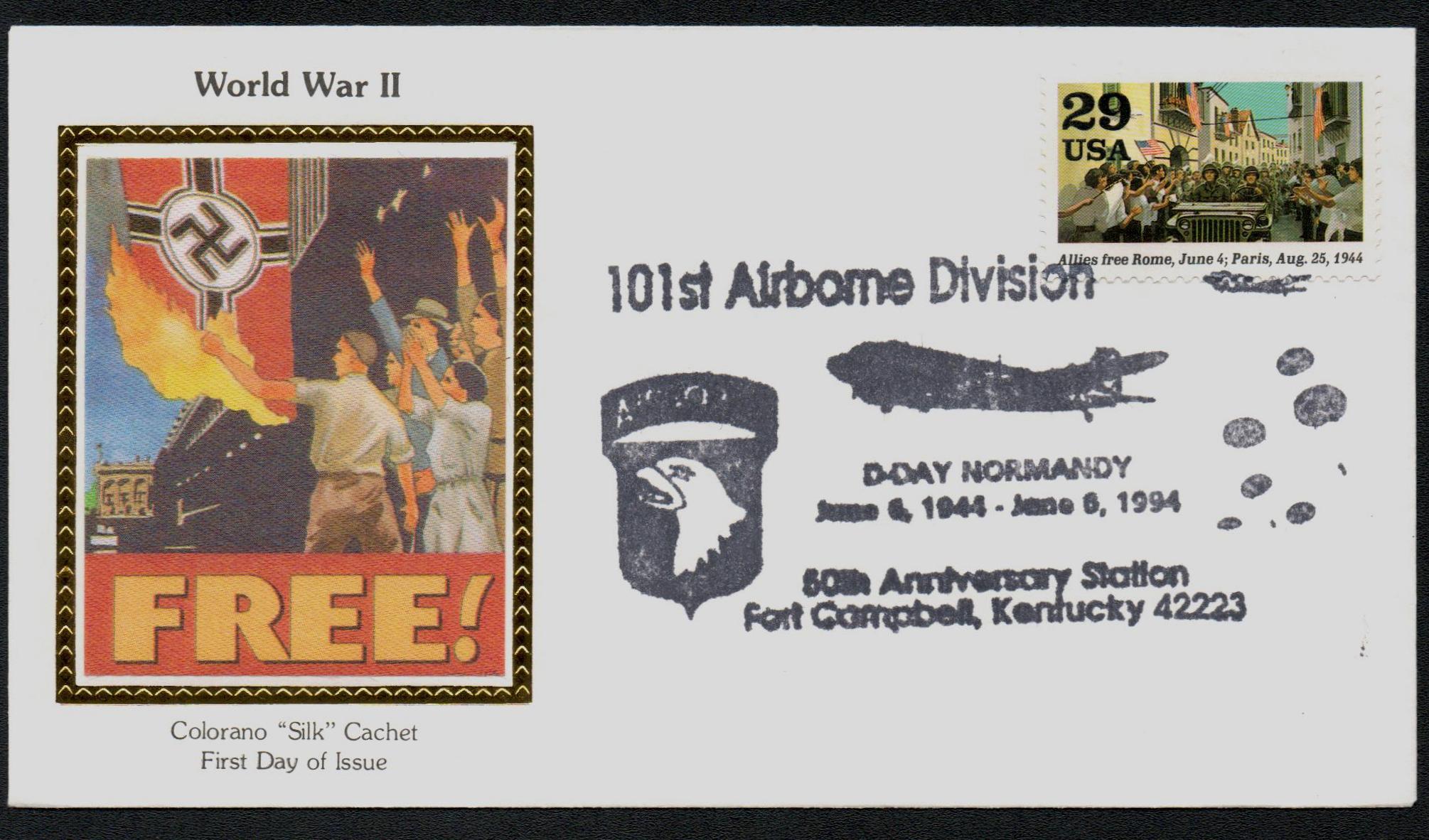
Meanwhile, Allied leaders believed the Germans had set up observation posts at the Benedictine monastery at Monte Cassino. It was a site of cultural and historic importance, so they didn’t want to rush to bomb it. However, some reasoned that if the Germans weren’t already using it, they should bomb it to prevent them from doing so. So in February, the order to bomb the historic abbey of Monte Cassino was approved. It was shelled for two days and most of the abbey lay in ruins. After that the Germans took over the monastery, fulfilling the Allied fears.
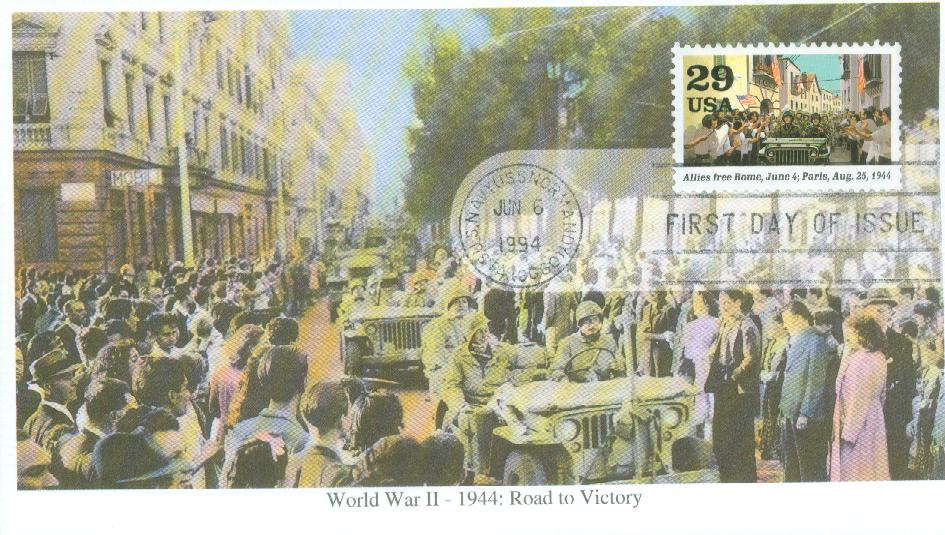
After two more failed attempts at penetrating the Gustav Line, the Allies created Operation Diadem. This deployed British, American, French, New Zealand, South African, and Polish forces in surrounding areas aimed at forcing the German retreat. Though the fighting was fierce, victory was achieved within a week. On May 18, Polish troops secured the mountaintop monastery at Monte Cassino.

This success allowed the Allies to reach Rome and free it on June 4. General Clark, who was at the forefront recalls, “There were gay crowds in the streets, many of them waving flags… Flowers were stuck in the muzzles of the soldiers’ rifles and of the guns on the tanks. Many Romans seemed to be on the verge of hysteria in their enthusiasm for the American troops .…â€Â The fall of Rome marked the final phase of the war. Two days later, Eisenhower’s forces landed in Normandy.
The hard-fought Battle of Monte Cassino was an important victory leading to the breakthrough to Rome. Despite its success, the battle had a high number of casualties – 55,000 Allies and 20,000 Germans.
Click here for a neat video about the battle.
Â
Often called the ultimate philatelic issue, the Fleetwood Proofcard is a distinctive commemorative with an elegantly embossed surface. Each Proofcard bears an original work of art complementing the theme of the stamp and created exclusively for Fleetwood by a leading American artist. Proofcards are often collected on their own, but would also make a beautiful addition to your existing stamp or cover collection.
Â
Battle Of Monte Cassino

On January 17, 1944, the Allies launched one of the longest and bloodiest fights of the Italian campaign – the Battle of Monte Cassino.
Although Italy had surrendered on September 3, 1943, Germany was determined to fight for control of the Italian mainland. In a series of head-on assaults, the Allies slowly battled their way up the Italian peninsula to Monte Cassino, 75 miles south of Rome.

Their efforts were slowed by bad weather, difficult terrain, and the tough German defense, particularly by General Kesselring’s German forces at the Gustav Line. Fighting in the first stage of the Battle of Monte Cassino began on January 17, 1944, with British troops attacking the Germans across a 20-mile-wide front along the coast.
The Allies launched another attack two days later, and as a result, the Germans called in additional support from Rome to reinforce their defenses. Fighting continued for several weeks with the Allies gaining ground, but they were unable to keep it.

While that fighting was going on, the Allies launched Operation Shingle, landing 36,000 men at Anzio on January 22, 1944. Surprising the Germans from behind, the Allied forces were met with little opposition. However, rather than pushing forward, they attempted to further reinforce their position, allowing Kesselring time to develop a powerful counteroffensive which kept the Allies pinned down at Anzio for four long months.

Meanwhile, Allied leaders believed the Germans had set up observation posts at the Benedictine monastery at Monte Cassino. It was a site of cultural and historic importance, so they didn’t want to rush to bomb it. However, some reasoned that if the Germans weren’t already using it, they should bomb it to prevent them from doing so. So in February, the order to bomb the historic abbey of Monte Cassino was approved. It was shelled for two days and most of the abbey lay in ruins. After that the Germans took over the monastery, fulfilling the Allied fears.

After two more failed attempts at penetrating the Gustav Line, the Allies created Operation Diadem. This deployed British, American, French, New Zealand, South African, and Polish forces in surrounding areas aimed at forcing the German retreat. Though the fighting was fierce, victory was achieved within a week. On May 18, Polish troops secured the mountaintop monastery at Monte Cassino.

This success allowed the Allies to reach Rome and free it on June 4. General Clark, who was at the forefront recalls, “There were gay crowds in the streets, many of them waving flags… Flowers were stuck in the muzzles of the soldiers’ rifles and of the guns on the tanks. Many Romans seemed to be on the verge of hysteria in their enthusiasm for the American troops .…â€Â The fall of Rome marked the final phase of the war. Two days later, Eisenhower’s forces landed in Normandy.
The hard-fought Battle of Monte Cassino was an important victory leading to the breakthrough to Rome. Despite its success, the battle had a high number of casualties – 55,000 Allies and 20,000 Germans.
Click here for a neat video about the battle.
Â







